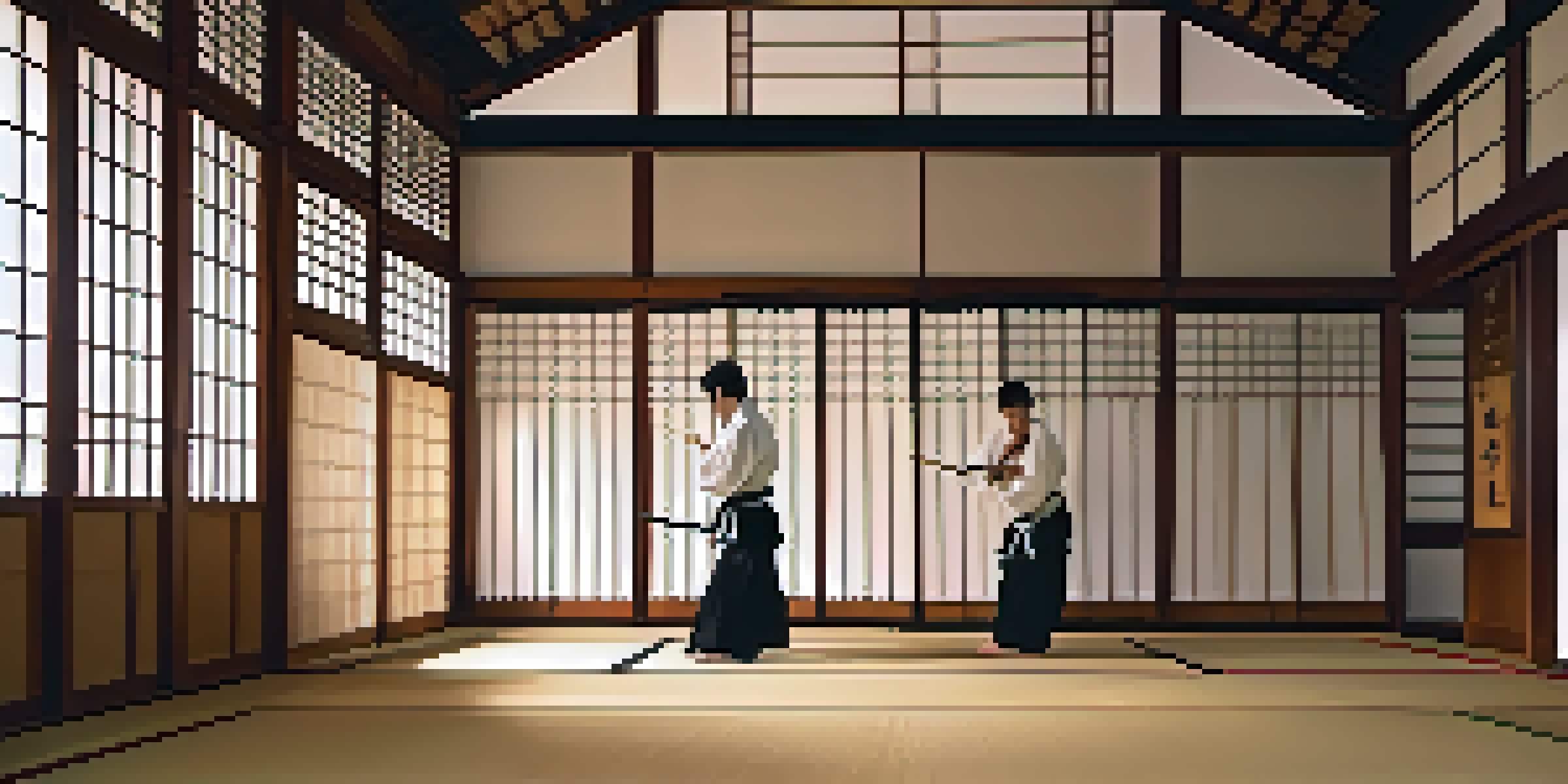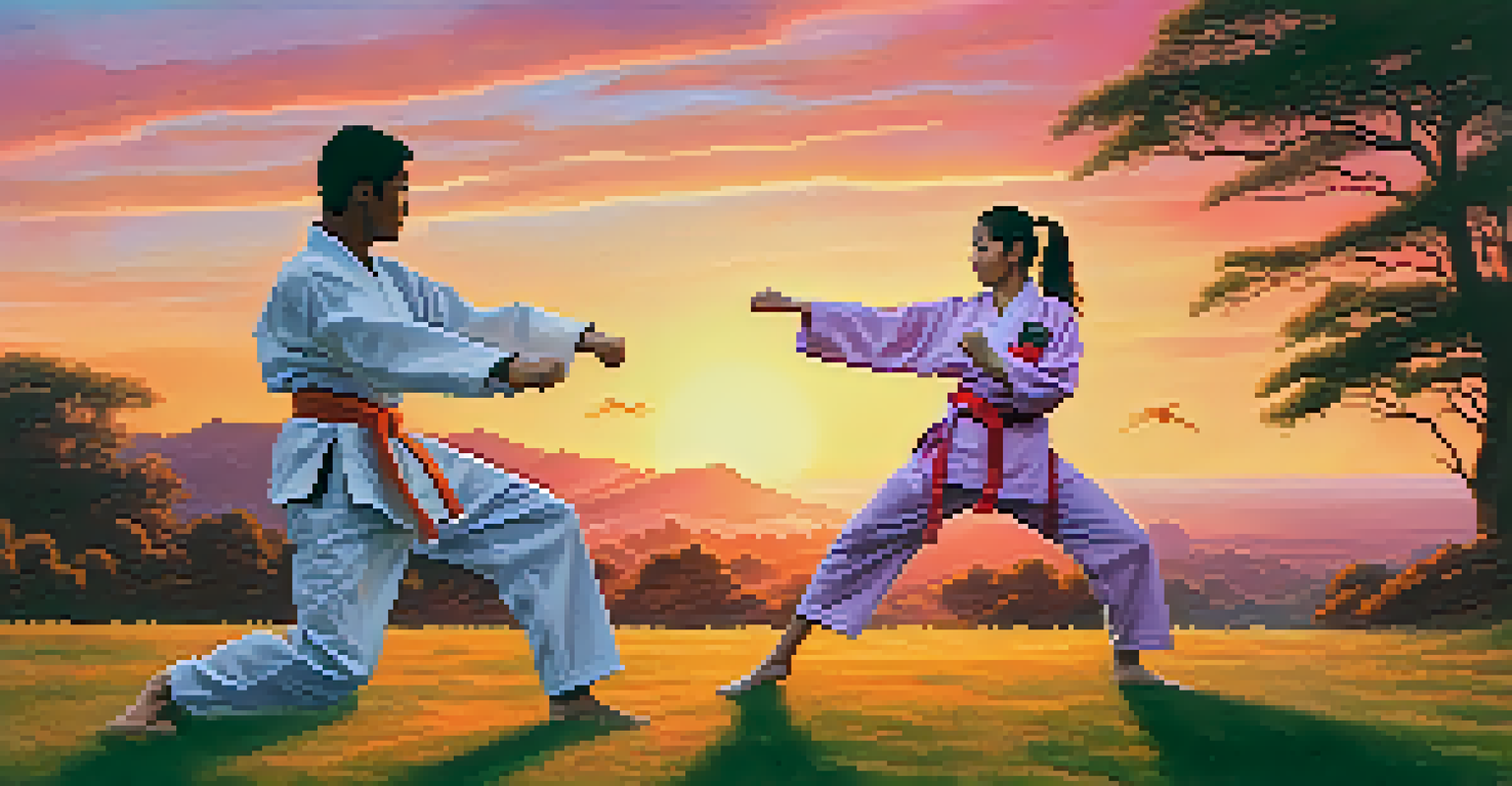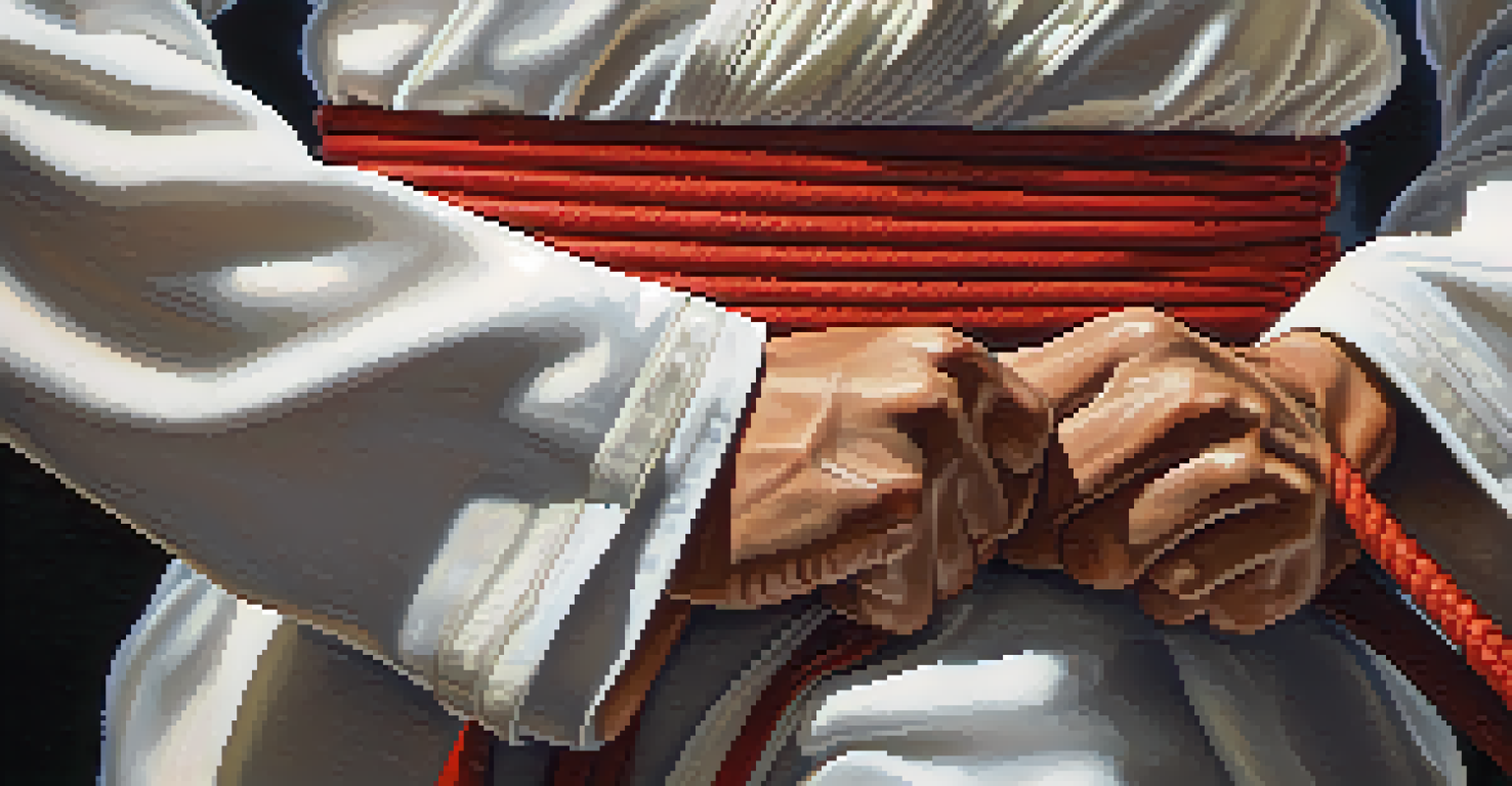Diversity in Techniques: A Look at Global Martial Arts

Understanding the Origins of Martial Arts Worldwide
Martial arts have deep historical roots that span across continents. Each style emerged in response to cultural needs, social structures, and historical events. For instance, the ancient Greeks developed Pankration, a blend of boxing and wrestling, to prepare warriors for combat.
The ultimate aim of martial arts is not having to use them.
In Asia, disciplines like Kung Fu and Karate evolved not only as fighting techniques but also as paths to personal development and spiritual growth. These arts reflect the philosophies of their respective cultures, emphasizing balance, discipline, and respect.
Understanding these origins can provide insight into the values and principles that underpin various martial arts today, showing us that each technique carries a story waiting to be discovered.
The Variety of Techniques: Striking, Grappling, and More
At first glance, martial arts may seem homogenous, but a closer look reveals a stunning array of techniques. Striking arts like Muay Thai focus on powerful kicks and elbows, while grappling arts such as Brazilian Jiu-Jitsu emphasize ground control and submissions.

Each technique serves specific purposes, whether for self-defense, sport, or fitness. For instance, Taekwondo is known for its high, fast kicks and is often practiced both as a competitive sport and a way to enhance physical fitness.
Martial Arts Reflect Cultural Values
Various martial arts styles originated from cultural needs and historical events, embodying the philosophies and values of their respective societies.
This diversity not only showcases the creativity inherent in martial arts but also allows practitioners to choose a style that resonates with their personal goals and preferences.
Cultural Influences on Martial Arts Techniques
Cultural background plays a significant role in shaping martial arts techniques. For example, Capoeira, a Brazilian martial art, combines elements of dance, acrobatics, and music, reflecting the cultural fusion of African and Brazilian influences.
Martial arts are a way of life. They teach you how to overcome obstacles, and they teach you how to be resilient.
Similarly, the Indian martial art of Kalaripayattu incorporates yoga and Ayurvedic principles, highlighting the connection between physical practice and holistic health. This cultural richness adds layers of meaning to the techniques and practices.
Understanding these cultural influences not only enriches our appreciation of martial arts but also fosters respect for the traditions from which they arise.
The Role of Philosophy in Martial Arts Practices
Philosophy is often as crucial as physical technique in martial arts. Many styles emphasize mental discipline, focus, and respect for oneself and others as integral components of training. For example, the concept of 'Do' in Japanese martial arts signifies a path or way, embodying the journey of personal growth.
Practitioners often engage in meditation or mindfulness practices alongside physical training. This holistic approach allows them to cultivate not just fighting skills but also emotional resilience and mental clarity.
Diverse Techniques for Personal Goals
Martial arts encompass a wide range of techniques, allowing practitioners to choose styles that align with their personal objectives, whether for self-defense, fitness, or competition.
By integrating philosophy into their training, martial artists embark on a journey that transcends mere combat, evolving into a lifelong pursuit of self-improvement.
Martial Arts as a Means of Self-Defense
One of the primary reasons people turn to martial arts is self-defense. Techniques are often designed to provide practical skills for protecting oneself in threatening situations. Styles like Krav Maga focus on real-world applications, emphasizing quick, effective responses to various types of attacks.
However, the benefits of martial arts extend beyond just physical self-defense. Training often boosts confidence and awareness, equipping practitioners with the mental tools to avoid confrontations and de-escalate potential conflicts.
Thus, martial arts serve as a comprehensive self-defense system, merging physical techniques with mental preparedness.
Martial Arts as a Global Phenomenon
Today, martial arts have transcended their geographical boundaries, becoming a global phenomenon. With the advent of technology and social media, enthusiasts can connect and share techniques from different styles and backgrounds. This exchange fosters a vibrant community that thrives on diversity.
International competitions, such as the World Karate Championships or the UFC, showcase the confluence of styles and techniques, attracting practitioners and fans from around the world. Such events highlight the unity that martial arts can bring, regardless of origin.
Global Community of Martial Artists
The rise of technology and social media has transformed martial arts into a global phenomenon, fostering a diverse community that shares techniques and traditions across borders.
This global interest not only preserves traditional practices but also encourages innovation and adaptation, continuously evolving martial arts as we know them.
The Benefits of Practicing Diverse Martial Arts
Engaging in various martial arts can offer practitioners a multitude of physical and mental benefits. Cross-training in different styles allows individuals to develop a well-rounded skill set, improving flexibility, strength, and endurance. For example, incorporating elements from both Judo and Muay Thai can enhance grappling skills and striking power.
Moreover, diversity in practice can prevent training plateaus, keeping the experience fresh and exciting. Practitioners often find that learning new techniques fosters creativity and keeps them motivated.

Ultimately, embracing the diversity of martial arts enriches the training experience, leading to greater personal growth and fulfillment.